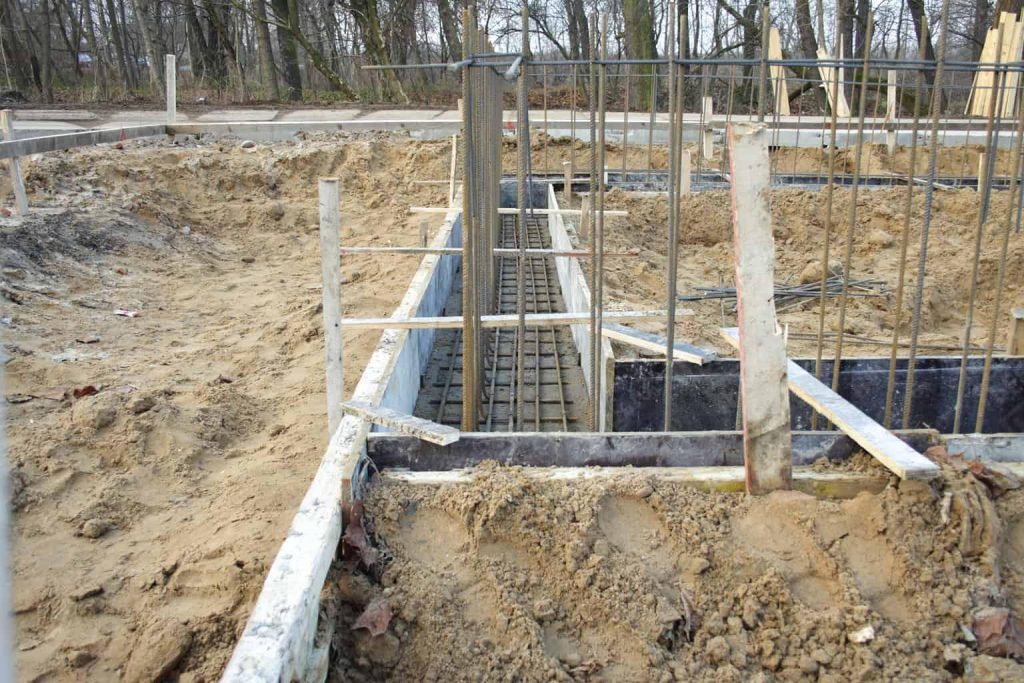The foundation is the lowest section of a building or civil structure, and it is the only element that is in direct touch with the ground. Its primary function is to safely transmit weights from the structure to the ground below. Shallow foundations and deep foundations are the two primary categories that may be used to describe the foundation in general. A load that is transferred from a shallow foundation is transferred to a stratum that is present at a shallow depth.
The weight is moved to a location that is farther below the surface of the earth thanks to the deep foundation. A structure with a very high height, such as a skyscraper, or one that is erected on extremely poor soil calls for a foundation that is rather deep. If the structure that is being erected is going to be extended vertically at some point in the future, then the foundation has to be rather deep.
In order to lay a foundation, trenches need to be dug deeper into the ground until they reach a firmer layer of soil. Concrete is poured into the trench as a means of producing a more robust base foundation. These ditches have a reinforcing cage built into them so that the foundation will have a greater degree of stability. The steel rods that are extended outwardly function as the bones of the structure, and they need to be linked to the substructure that is located above them.
The construction of the structure may get underway after the foundation has been compacted in the appropriate manner. Concrete, steel, stones, bricks, and other materials besides may be used in the building of the foundation. Both the design loads and the underlying soil type will have an impact on the choice of foundational material and type that will be used for the project that is sought.
The design of the foundation has to take into account a variety of environmental impacts that will result from the building. For instance, the labour of digging and piling that is done in order to construct a deep foundation may result in an unfavourable disruption to the soil and structure foundation in the surrounding area. These factors are sometimes responsible for the settling problems experienced by the surrounding structure.
Before moving through with these surgeries, such impacts need to be researched and carefully considered. It is essential that the waste products from the activities be disposed of in an appropriate manner. In order to withstand the assault from the outside by potentially hazardous chemicals, it is necessary to establish a foundation. The basis of each structure is conceived in such a way as to ensure that:
Shear failure does not occur in the soil that is under the foundation construction.
The settlement that occurred during the first load of service or had to be within the limit.
The pressure that a layer of soil is able to sustain before giving way is referred to as its allowable bearing pressure.
What exactly is the function of the foundation?
The following are some of the reasons why foundations are supplied for all load-bearing structures:
The structure’s foundation is the primary factor that contributes to its overall steadiness. When the foundation is solid, the structure as a whole tends to be more stable.
A solid surface must be provided for the growth of the substructure on top of a firm bed by carefully planning and constructing the foundations. This surface must be at the correct level. There are many different simple compound wall design patterns that can be used for a compound wall.
The use of a foundation that has been specially built may assist in stopping the supporting material from moving laterally.
The weight of the structure is distributed evenly over the top of the bed when a solid foundation is used. The uneven settling of the structure may be helped forward in its repair by using this consistent transfer. Differential settlement is a construction impact that should be avoided wherever possible.
The function of the foundation is to evenly disperse the weight of the building over a broad base area before it is transferred to the ground below. The load that is being transmitted to the soil should not exceed the maximum bearing capacity that the soil is capable of supporting.
The Role of the Foundation in the Construction Process
The primary functions of the foundation may be broken down into the following categories, which are determined by the reasons why foundations are used in building projects:
- Offer the structure a comprehensive degree of lateral stability.
- The purpose of the foundation is to provide a flat surface upon which the building of the substructure may take place.
- The distribution of load is carried out in an even manner.
- It is necessary to lessen the load’s intensity so that it is compatible with the safe carrying capability of the soil.
- The impact of soil movement is impeded and stopped by the resistance.
- The concerns of scouring and undermining are resolved as a result of the building of foundations.
